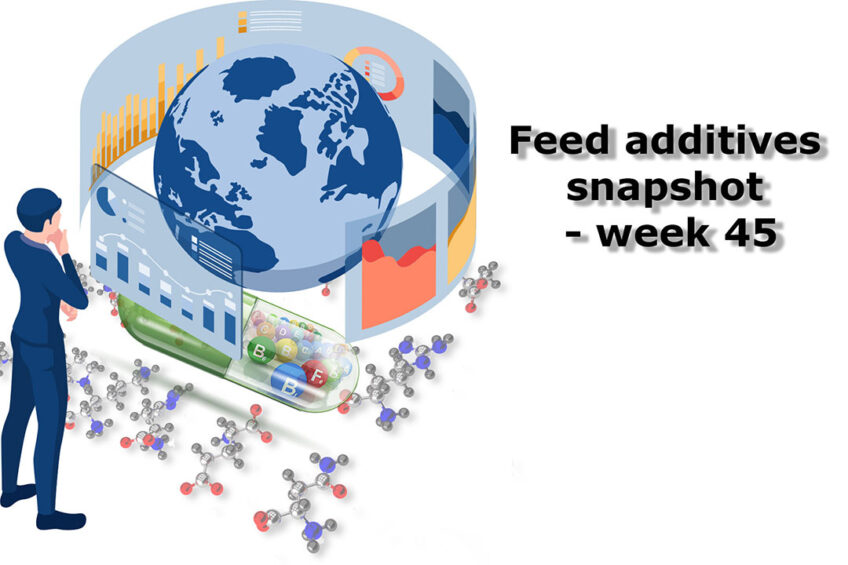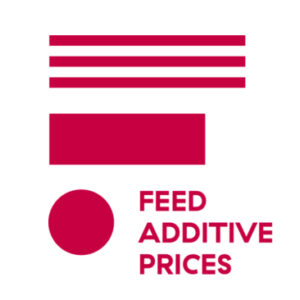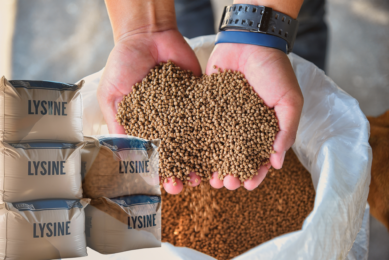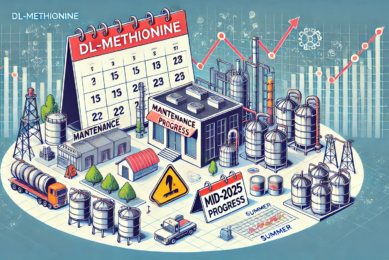Vitamin manufacturers continue to optimise and lower costs

The market is in an absolute wait and see mode from a buying point of view. With suppliers trying to move volume and reduce prices, but also not reduce too much. Learn more in this week’s feed additives snapshot (week 45).
The pipeline for the second half of Q1 needs to be filled soon, but no signs of action yet. Both lysine hcl and lysine sulphate have been a bit weaker this week in regions like China and Europe. Threonine is still holding up, although there is also a slightly weaker tone seen there. Methionine prices have stayed stable to slightly weaker for small volumes of spot supply. But overall larger volumes for nearby are difficult to obtain. Valine and tryptophan are both stable to weakish.
Instead of expecting a future increase of prices, vitamin manufacturers focus even more now on optimising and cost saving, as no short term changes in the vitamin market are expected. D-calpan and vitamin B3 are still weak and prices continue to decrease. Vitamin A 1000 came down a bit as well again, after a relatively stable period. One of the main manufacturers is trying to regain market share and that puts downwards pressure on the price. Vitamin E and D3 show no changes compared to previous weeks and remain stable to weak. Some vitamin B2 suppliers have stopped offering in an attempt to stop the price decline. Overall the vitamin market continuous to feel weak and quiet.
In partnership with Feed Additive Prices
Lysine
The volume of business is really low in all major regions and the price has been weakening a few cents compared to previous weeks. There are some reports of snowfall at the production locations, which may potentially delay local transport in China. And also re-stocking locally in China is expected soon to buffer for the Chinese New Year holidays in February. But at the same time, stocks are very good and a big part of that is still unsold. Shipments ex-China are offered for late December and in some cases January shipment now. Q4 and a portion of Q1 are contracted, but buyers are mostly still waiting to contract the remainder of Q1.
Threonine
In an overall slightly weaker amino acids market, threonine is holding up still, although some suppliers have reduced their price slightly now for December shipment. But, on average, prices have remained stable at a higher price level compared to earlier this year. It seems threonine availability is good but not as good as lysine. The market feels very quiet. Q4 is mostly contracted by now and some overlap into Q1 as well. For the remainder of Q1 there is a wait-and-see attitude.
DL-Methionine
Availability is still said to be tight for nearby deliveries in most regions (except for the US) and suppliers are not willing to offer significant volumes. For small volumes, there are now slightly weaker spot prices seen in some regions. The market feels very quiet. Q4 and an overlap into Q1 are mostly contracted, but buyers have a wait-and-see attitude for further Q1 2024 purchases.
Tryptophan
Overall the market is very quiet and relatively stable at the moment. Significant production capacity expansion was announced recently, which will have to find its way into the market in 2024 and onwards. The situation in the US is still firm due to the poor availability of local domestic product. Q4 is mostly contracted but Q1 cover is still limited.
Valine
Both in China and Europe, the market has been getting weaker recently. Consumption is good, especially compared to other amino acids, but there is currently an oversupply, and prices ex China have weakened and that is seen now in other regions as well. Western suppliers still ask for a premium compared to Chinese suppliers, but the spread is smaller than before as Western suppliers do not want to lose too much market share. It is relatively calm right now as most buyers are contracted ahead for Q4 and a portion of Q1, and there is no urgency to buy anything right now.
Vitamin E 50%
The vitamin E market has become slightly weaker again after a relatively stable period. Although there has been de-stocking going on since the summer, there is still sales pressure amongst some suppliers and that is putting pressure on the price in some regions. The market is quiet and calm and no significant changes in the trend are expected anytime soon. Manufacturers continue to offer resistance against further price decline but are also careful not to lose market share. Most of Q4 is contracted.
Vitamin A 1000
Prices have been a bit weaker in some regions, as one of the main manufacturers is proactively trying to regain market share. Vitamin A 1000 prices have reached a very low level and most suppliers are focusing on reducing costs, as there are no short-term expectations that the market dynamics will change significantly. Q4 is largely contracted by now and even some overlap is seen into Q1.
Vitamin D3 500
The market remains stable to weak in most regions. The speed of price decline is less though, compared to several weeks ago. Market prices remain very low from a historical point of view. Supply is ample on a global basis, although local stocks are sometimes low. There is a decent cover on Q4 already, but buyers are not tempted to take longer-term positions, despite the already low price.
Vitamin B2 80%
A bit more resistance is seen from several suppliers and some have stopped offering, in an attempt to stop the price decline. But, the vitamin B2 market still feels weak and quiet in most regions. The price in Europe has not been affected by the decline as such, the price has almost been a flat line for months now and as long as no new (Chinese) capacity is seen in the EU, no changes are expected. A good portion of Q4 was contracted already some time ago.
D-Calpan
Prices continue to weaken further and no nearby change is expected in that trend so far. There is too much material available and suppliers continue to fight for market share. At the same time, the market feels very quiet. Most of Q4 is contracted by now, although some buyers still buy spot.
Vitamin B3
The market continues to feel weak and several suppliers are keen to sell more volume. But as a significant volume is already contracted by end-users for the coming months, there is no new demand right now. The speed of price decline is getting less though. Most of Q4 is contracted and a portion of Q1 is as well in some regions.











